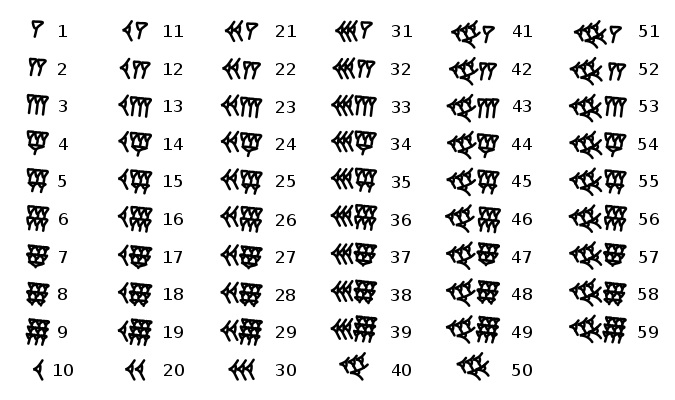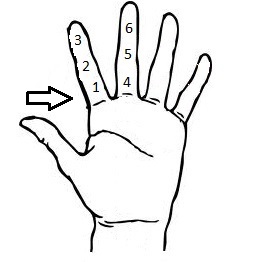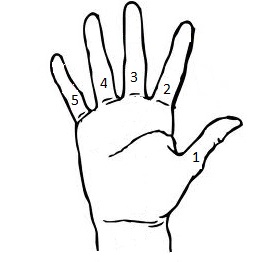The History of Numbers
To understand AI, it is important to understand the concept of Numbers and Counting.
AI is About Numbers
Artificial Intelligence is all about Numbers.
Numbers are easy to understand: 1,2,3,4,5 ... 11,12,13,14,15.
Studies of animals indicates that even animals can understand some numbers:
- 2 Wives
- 8 Sons
- 5 Eggs
The need for numbers in the modern world is absolute. We cannot live without numbers:
- 100 Dollar
- Pi = 3.14
- 365 Days
- 25 Years
- 20% Tax
- 100 Miles
AI is About Counting
The concept of numbers leads to the concept of counting.
Imagine prehistoric thinking:
- How to count apples?
- How to weigh corn?
- How to pay?
- How far is the ocean?
Artificial Intelligence is a result of the human need for calculations.
Counting is easy to understand: 2 + 2 = 4.
Studies of animals indicates that animals can only understand very simple counting.
How do Homo Sapiens deal with calculations?
Complex calculations are done by computers.
"Yes! Computers can be smarter than humans."
Babylonian Numbers (Base 60)
We believe that the Babylonians started the development of complex counting.
The Babylonian number system has 60 different digits. It is a Base 60 system.

Two Babylonian Scientists
About 6000 Years ago ...
Two Babylonian scientists were talking (writing numbers as dots on a paper):
Scientist 1: "We need to invent a number system".
Scientist 2: "What?".
Scientist 1: "We need to give every number a name".
Scientist 2: "You mean like 1, 2, and 3".
Scientist 1: "Exactly!".
Scientist 2: "But why?".
Scientist 1: "How can I tell you I have 7 sons, if you don't know what 7 is?
Scientist 2: "Every number should have a name?".
Scientist 1: "Exactly!".
Scientist 2: "So, how many numbers do we need? 15?".
Scientist 1: "More. Some people have more than 15 sons".
Scientist 2: "Ok. 30 then. Just to be sure".
Scientist 1: "But people older than 30 should be able to tell their age".
Scientist 2: "Ok. 60 then".
Sexagesimal (base 60)
The sexagesimal system (base 60):
- There are 60 seconds in one minute
- There are 60 minutes in one hour
60 is very versatile. It can be divided by 1,2,3,4,5,6,10,12,15,30, and 60.
The Babylonian system was a place-value system, where the digits to the left represented full values, much like our decimal system.
1,5 means 65 (1 times 60, plus 5)
3,30 means 210 (3 times 60, plus 30)
The reason why the Babylonians used 60 as the base, was (we like to believe) that 60 is divisible with most numbers: 1,2,3,4,5,6,10,12,15,20,30, and 60.
The downside was that the user had to remember 60 different digits. But the system was smart. A lot of it is still in use today:
| What | We | Why |
|---|---|---|
| A full circle | 360° | 6 x 60 = 360 |
| Half a circle | 180° | 3 x 60 = 180 |
| One Hour | 60° | 1 x 60 = 60 minutes |
The Babylonians counted to 360 because of their sexagesimal (base-60) number system, which they inherited from earlier Mesopotamian cultures. This system led to many mathematical and astronomical conventions that we still use today, including:
Dividing a circle into 360 degrees
- The Babylonians observed that a year is roughly 360 days (based on early solar calendars).
- They associated celestial movements with circular motion and divided the circle into 360 parts (degrees).
Using Base-60 (Sexagesimal) System
- 60 is a highly composite number, meaning it has many divisors (1, 2, 3, 4, 5, 6, 10, 12, 15, 20, 30, 60), making it useful for fractions and measurements.
- 360 is a multiple of 60 (60 × 6), which fits neatly into their mathematical framework.
Astronomical and Calendar Significance
- The Babylonians tracked lunar and solar cycles, which were closely linked to the approximate 360-day year.
- They divided the sky into 12 zodiac constellations, each spanning 30 degrees.
Influence on Time Measurement
-
The 60-minute hour and 60-second minute also originate from the Babylonian system.
These divisions ensured easy calculations for astronomers and timekeepers.
The origin of the Sexagesimal system (base 60) has been lost in history.
But it looks like it has been used in parallel with the Dozenal system since ancient times.
Dozenal (base 12)
The dozenal system (base 12):
- There are 12 in a dozen
- There are 12 hours in a day
- There are 12 hours in a night
- There are 12 months in a year
12 is very versatile. It can be divided by 1,2,3,4,6,and 12.
How to Count Dozenal
With two hands, you can count to 60.
Each of your fingers have 3 joints:
 |
 |
| The thumb counts to 12 on left hand. | The right hand counts the number of left hands. |
- 1 full hand = 12
- 2 full hands = 24
- 3 full hands = 36
- 4 full hands = 48
- 5 full hands = 60
Roman Numbers (Base 10)
Roman numbers originated in Rome and was used in Europe into the Middle Ages.
| Symbol: | I | V | X | L | C | D | M |
| Value: | 1 | 5 | 10 | 50 | 100 | 500 | 1000 |
The Romans used a Base 10 system. Possibly because they used their 10 fingers to count.
Today, most of the world use a Base 10 number system:
Western numbers, Chinese numbers, Brahmi numbers, Greek numbers, Hebrew numbers...
5 means 5
50 means 5 times 10
500 means 5 times 100
57 means 5 times 10, plus 7
75 means 7 times 10, plus 5
Digital Numbers (Base 2)
Humans can count with base 10 numbers, computers can not.
Electricity cannot count. Electricity can only be On and Off.
Computers use Electricity or Magnetism to represent On and Off.
Computers use Digital Numbers like 11100110 (in contrast to Base 10 Numbers like 230).
Digital numbers (11100110) are also called Binary Numbers.
You will learn more about digital computers in the next chapter.
Man vs. Computer
Computers can handle an unlimited amount of numbers.
Humans can not.

